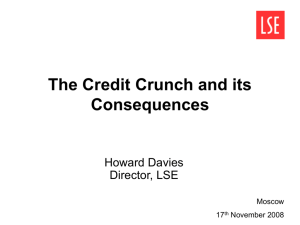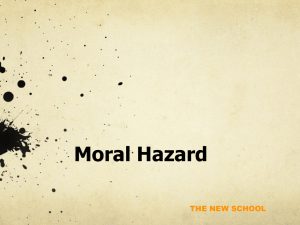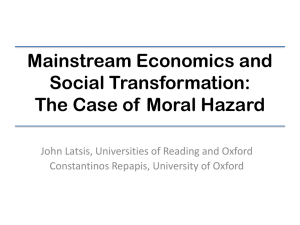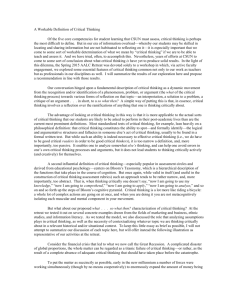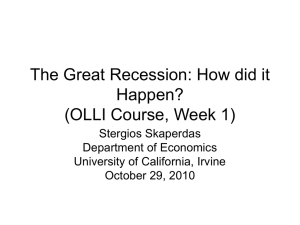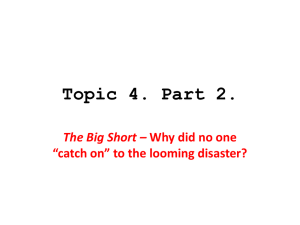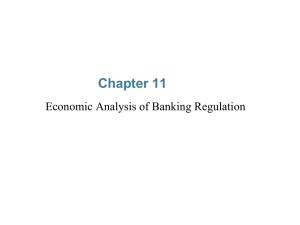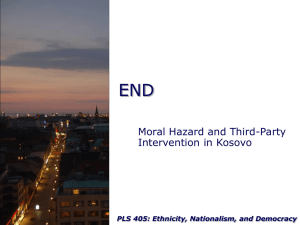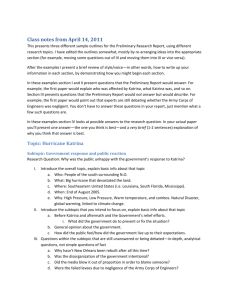Source
advertisement
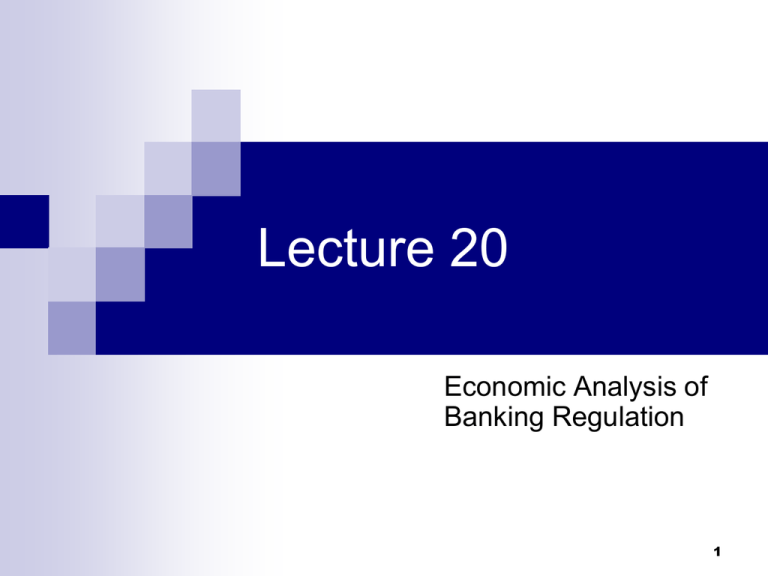
Lecture 20 Economic Analysis of Banking Regulation 1 Asymmetric Information and Bank Regulation: Government Safety Net Bank panics and the need for deposit insurance: FDIC: short circuits bank failures and contagion effect. Payoff method. Purchase and assumption method (typically more costly for the FDIC). Other form of government safety net: Lending from the central bank to troubled institutions (lender of last resort). Government Safety Net Moral Hazard Depositors do not impose discipline of marketplace. Financial institutions have an incentive to take on greater risk. Adverse Selection Risk-lovers find banking attractive. Depositors have little reason to monitor financial institutions. Government Safety Net:Too Big to Fail Government provides guarantees of repayment to large uninsured creditors of the largest financial institutions even when they are not entitled to this guarantee Uses the purchase and assumption method Increases moral hazard incentives for big banks Government Safety Net: Financial Consolidation Larger and more complex financial organizations challenge regulation Increased “too big to fail” problem Extends safety net to new activities, increasing incentives for risk taking in these areas (as has occurred during the subprime financial crisis in 2007-2008). Restrictions on Asset Holdings Attempts to restrict financial institutions from too much risk taking Bank regulations Promote diversification Prohibit holdings of common stock Capital requirements Minimum leverage ratio (for banks) Basel Accord: risk-based capital requirements Regulatory arbitrage Financial Supervision: Chartering and Examination Chartering (screening of proposals to open new financial institutions) to prevent adverse selection Examinations (scheduled and unscheduled) to monitor capital requirements and restrictions on asset holding to prevent moral hazard Capital adequacy Asset quality Management Earnings Liquidity Sensitivity to market risk Filing periodic ‘call reports’ Assessment of Risk Management Greater emphasis on evaluating soundness of management processes for controlling risk Trading Activities Manual of 1994 for risk management rating based on Quality of oversight provided Adequacy of policies and limits for all risky activities Quality of the risk measurement and monitoring systems Adequacy of internal controls Interest-rate risk limits Internal policies and procedures Internal management and monitoring Implementation of stress testing and Value-at risk (VAR) Disclosure Requirements Requirements to adhere to standard accounting principles and to disclose wide range of information The Basel 2 accord and the SEC put a particular emphasis on disclosure requirements The Sarbanes-Oxley Act of 2002 established the Public Company Accounting Oversight Board Mark-to-market (fair-value) accounting Restrictions on Competition Justified as increased competition can also increase moral hazard incentives to take on more risk. Branching restrictions (eliminated in 1994) Glass-Steagall Act (repeated in 1999) Disadvantages Higher consumer charges Decreased efficiency Table 1 Major Financial Legislation in the United States Table 1 Major Financial Legislation in the United States (cont.) FIGURE 1 Bank Failures in the United States, 1934–2008 Source: www.fdic.gov/bank/historical/bank/index.html. The 1980s S&L and Banking Crisis Financial innovation and new financial instruments increased risk taking Increased deposit insurance led to increased moral hazard Deregulation Depository Institutions Deregulation and Monetary Control Act of 1980 Depository Institutions Act of 1982 The Financial Institutions Reform, Recovery, and Enforcement Act of 1989 Financial Institutions Reform, Regulatory and Enforcement Act of 1989 Federal Deposit Insurance Corporation and Improvement Act of 1991 Cost of the bailout approximately $150 billion, or 3% of GDP. Whither Financial Regulation After the Subprime Financial Crisis? Regulation should focus on limiting the agency problems created by the “originate-to-distribute” business model Increased regulation of mortgage brokers Tighten licensing requirements Require to disclose information Whither Financial Regulation After the Subprime Financial Crisis? (cont’d) Fewer subprime mortgage products. Regulation of compensation Higher capital requirements Whither Financial Regulation After the Subprime Financial Crisis? (cont’d) Additional regulation of privately owned government sponsored enterprises Fully privatize them Completely nationalize them Leave them as privately owned government sponsored enterprises and Strengthen regulation Reduce their size Whither Financial Regulation After the Subprime Financial Crisis? (cont’d) Heightened regulation to limit financial institutions’ risk taking Increased regulation of credit-rating agencies Restrict conflicts of interest Additional regulation of derivatives The danger of overregulation.

